The challenging Delta Lake hike rewards adventurers with one of the most iconic, pristine views in Grand Teton National Park. It comes at a ‘steep’ price, however, pun intended! We put together this Delta Lake trail guide so you know exactly what to expect.

Milky green-blue glacial lakes, craggy mountain peaks, wildlife, wide-open views, and rugged, heart-pounding terrain…the Delta Lake hike delivers just about everything the Tetons are known for in one challenging but worth-every-second trail.
Just a few years ago, this hike was a hidden gem. In fact, the park still doesn’t maintain it or even list Delta Lake as an official trail! In spite of that, however, it’s (understandably!) become one of Grand Teton National Park’s most popular hikes.
Add in the option to hike to not one but TWO additional glacial lakes, and this is easily one of the most epic hikes in Grand Teton National Park.
Delta Lake Trail Guide
- Delta Lake trail stats
- Hike overview
- Know before you go
- The route
- Tips for hiking to Delta Lake
- Where to camp
- What to pack

Delta Lake trail stats
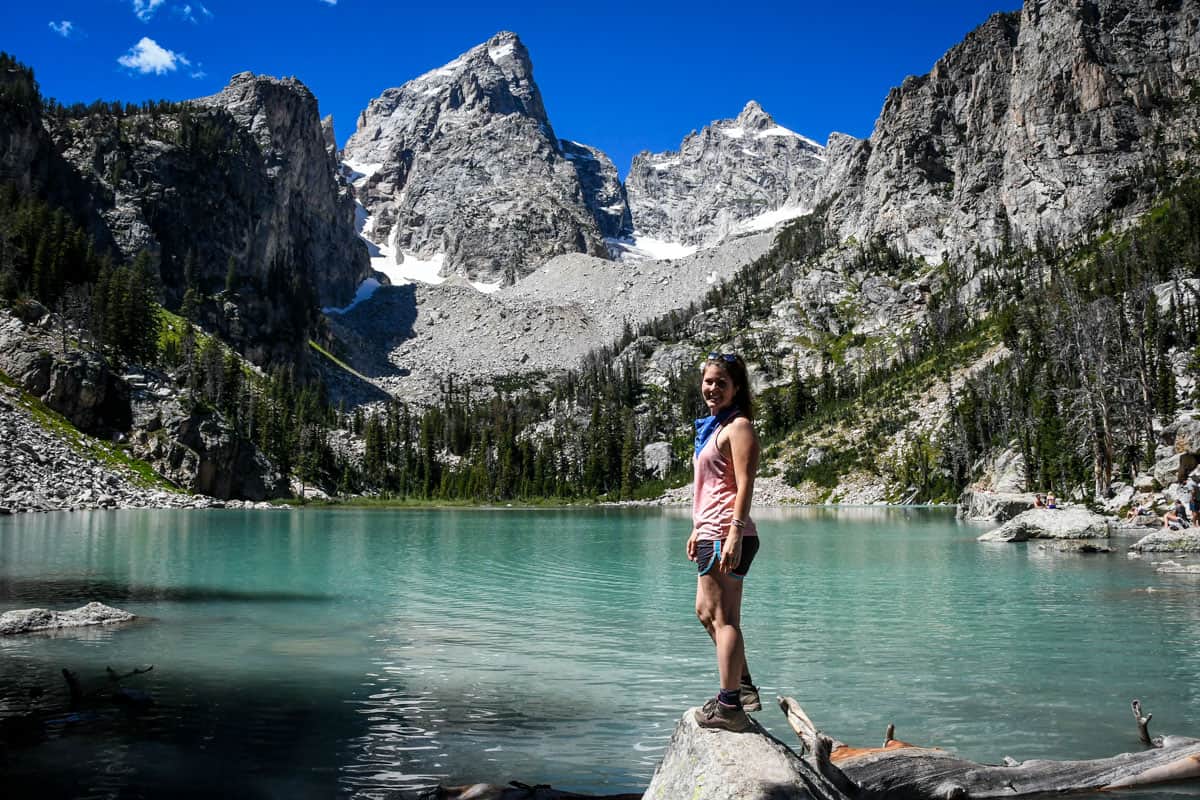
- Location: Grand Teton National Park, Wyoming
- Distance: 7.4 miles out and back
- Elevation gain: 2,300 feet
- Difficulty rating: Challenging
- Timing: 5-7 hours, depending on if you also hike to Surprise and Amphitheater lakes
- Pets: Not allowed
- Permits: None required unless you plan to camp at Surprise Lake
- View the trail notes
Delta Lake hike overview
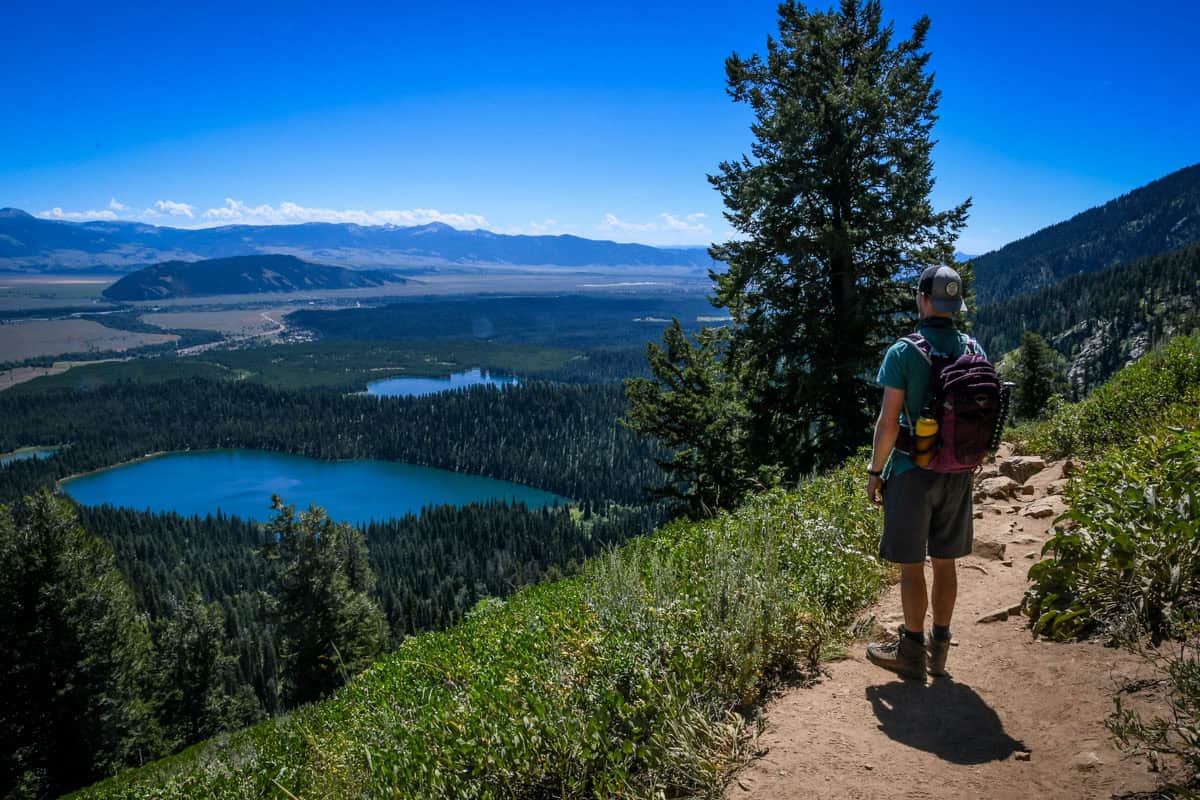
Sitting right at the foot of jaw-dropping 13,770-foot-tall Grand Teton itself, Delta Lake and its striking bright green-blue water is arguably one of the most unforgettable views anywhere in the Tetons.
Getting there is just as memorable, involving a steep, strenuous hike and navigating off-trail through boulders and downed trees.
That ‘off-trail’ bit is important: most of the Delta Lake hike (about ¾ of it) follows official GTNP trails en route to Surprise and Amphitheater lakes, but the last half-mile or so does not.
To clarify, that means the park doesn’t maintain this section of trail at all, leading from the official Surprise/Amphitheater Lakes Trail to Delta Lake.

Despite it being an extremely popular hike, it’s easy to lose your way on that unmaintained section. There are no trail markings whatsoever, and you’ll cross two sizable boulder fields. It’s part of the adventure, though, and makes this hike feel even wilder, in spite of the crowds.
Our hope is that with this detailed trail guide, you’ll easily be able to find your way to Delta Lake. Not only will you have a far better experience, but (hopefully!) we can also help minimize some of the human impact on the areas surrounding the trail.
Things to know before you go
Since this trek is challenging and veers into ‘unmaintained trail’ territory, there are several things to take into consideration before hiking to Delta Lake.
Best time of year for the Delta Lake hike
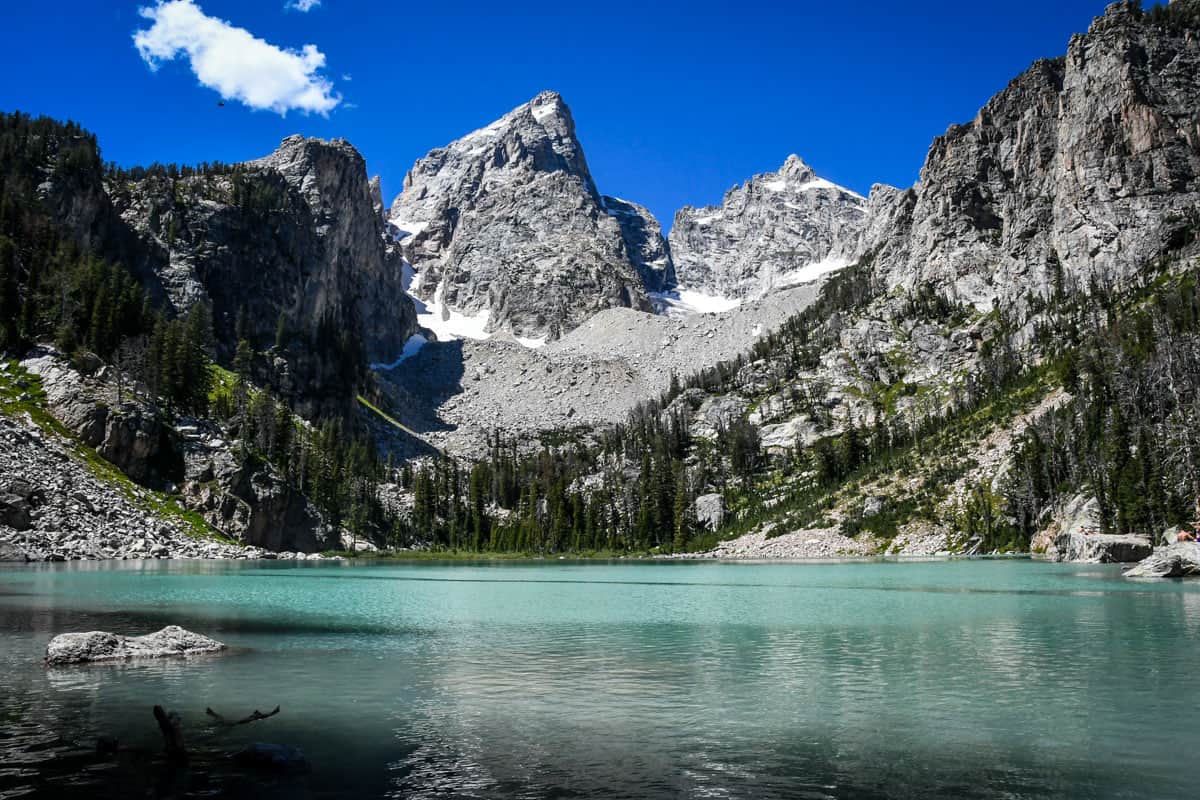
Without a doubt, July through mid-September is the best timeframe to hike to Delta Lake. Park roads and trails are (mostly) clear of snow and accessible, and the weather is generally favorable.
You can do the Delta Lake hike in June or later in September—maybe even into early October, but the weather is dicey. While you may catch some nice, sunny days, a freak early or late-season snow storm could also blow in without warning.
How long does it take to hike to Delta Lake?
Depending on your hiking pace and how much time you want to spend at the lake, plan on at least five hours (5-6 is a solid estimate for average hikers).
If you also want to hike to Surprise and Amphitheater lakes, tack on an additional 1-2 hours.
How difficult is the Delta Lake hike?
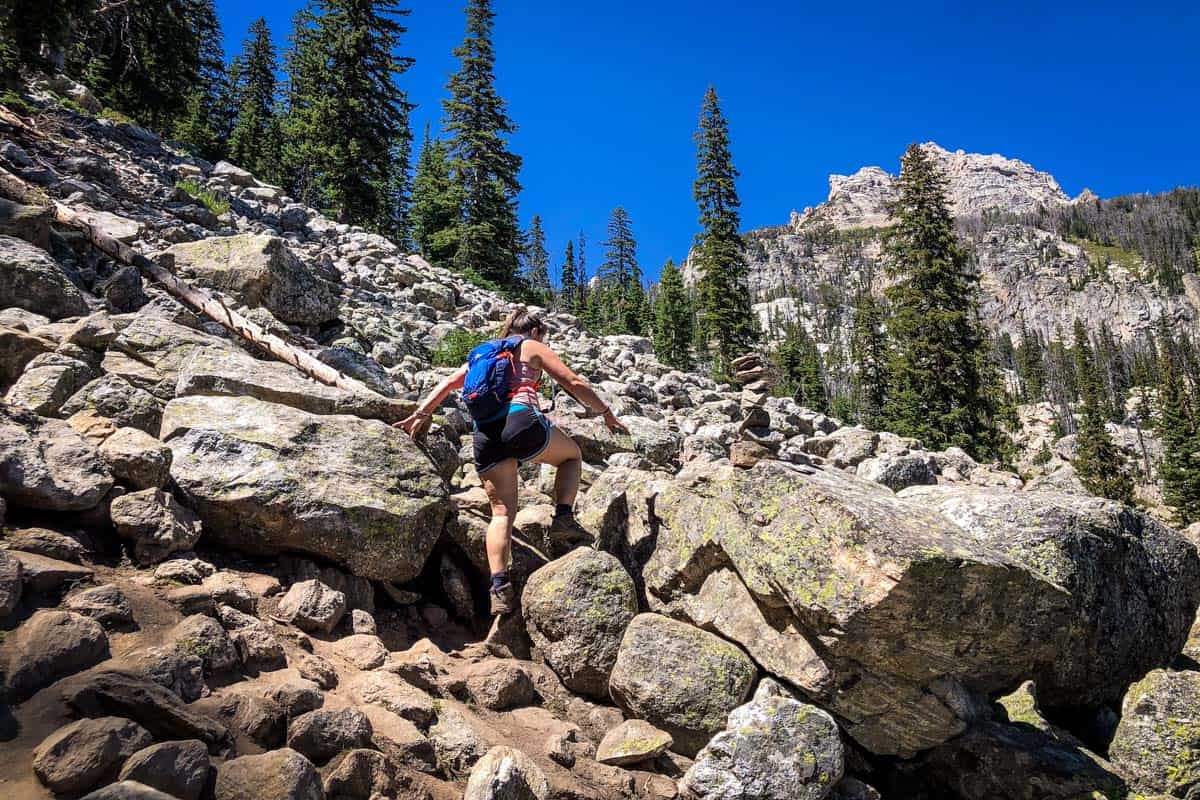
The hike to Delta Lake, particularly the last half-mile stretch, is very challenging. Because it’s not technically a maintained trail, it’s definitely more of an advanced-level hike.
You’ll have to navigate through a sizable boulder field and several fallen trees, and the trail is steep and extremely slippery, even in optimal conditions. The higher elevation also adds another challenge.
The Amphitheater Lake Trail, while also considered difficult, is more manageable. So to clarify, we’re referring strictly to the unofficial half-mile portion of the trail to Delta Lake as really tough.
National Park Annual Pass

If you’re planning to visit more than one of the U.S. national parks, we’d highly encourage you to look into getting an annual park pass. At $30 per vehicle for the entrance fee, visiting Mount Rainier National Park along with most other national parks in the U.S. can get expensive.
For just $80 per year, you can purchase the America the Beautiful Park Pass. This pass grants you free access to all of the national parks. Plus it also covers your entrance to over 2,000 natural, historical, and recreational sites across the United States.
→ If you still need convincing, check out our article: America the Beautiful Annual Park Pass: Is it Worthwhile?
Wildlife on the trail
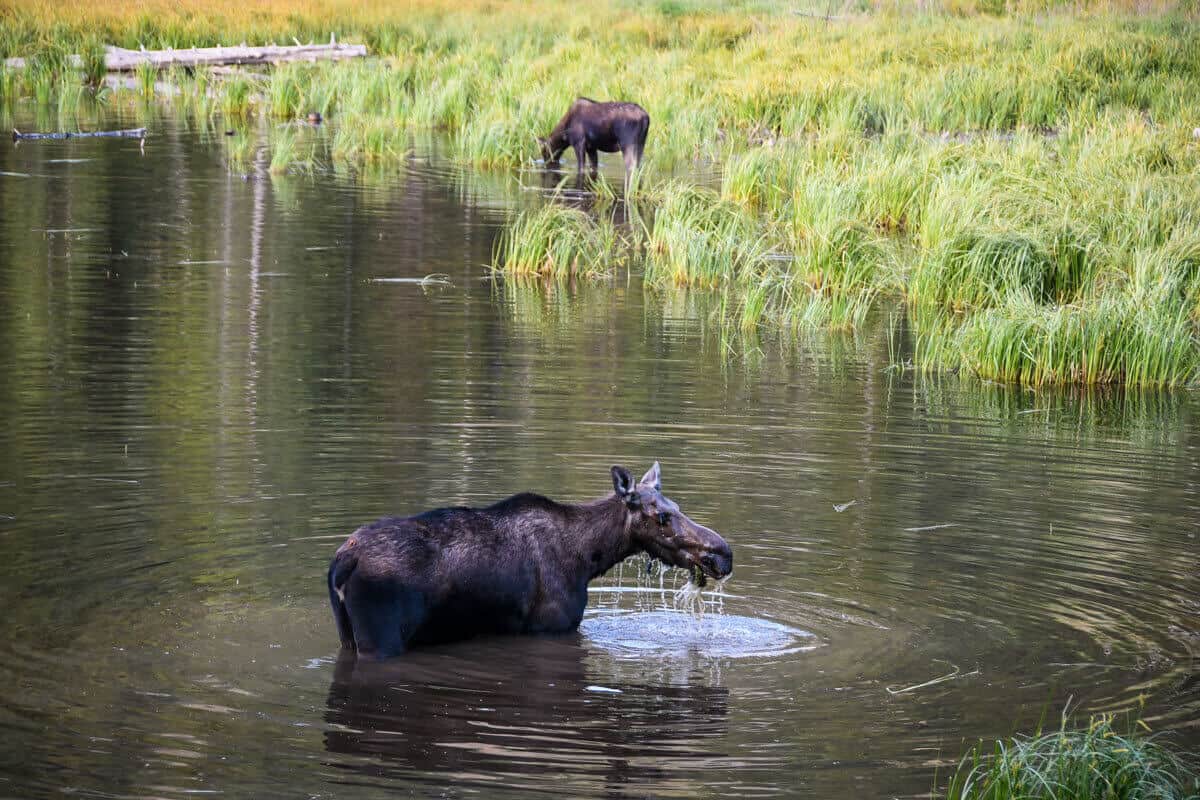
Grizzly bears, black bears, and other big game like deer, elk, and moose do live in the Tetons, so it’s not out of the ordinary to see them. Luckily, sightings aren’t super frequent, either.
Be prepared for a wildlife encounter by talking loudly on the trail (even if you’re alone—actually, especially if you’re alone!) and carrying bear spray. Just as important, be sure you know how to use it BEFORE you potentially need to!
The route
We broke down the route for the Delta Lake hike into parts to give you an idea of what to expect on the trail.
Part I
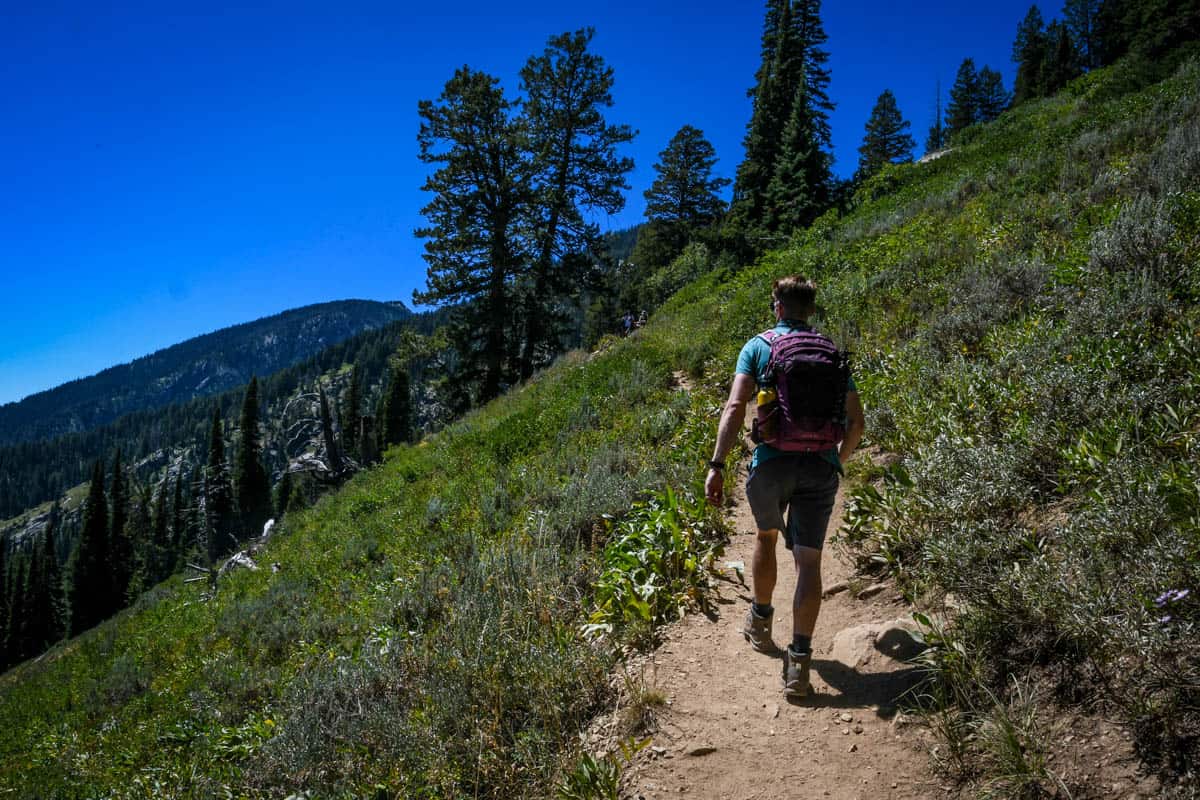
Start at the Lupine Meadows trailhead, at the end of a fairly large parking lot with a pit toilet and trash cans. Several popular hikes start here, so the lot often fills up. There is an overflow lot along the road, but parking there will add to your total distance, so arrive as early as possible.
Hop on the Valley Trail, which is deceptively easy for the first mile, taking you through thick forest on a flat trail.
Right around one mile, you come out of the forest and the trail starts noticeably ascending (and spoiler alert, it doesn’t stop for a LONG time!). As you make your way up the ridge, enjoy wide-open views of Bradley and Taggart lakes below.
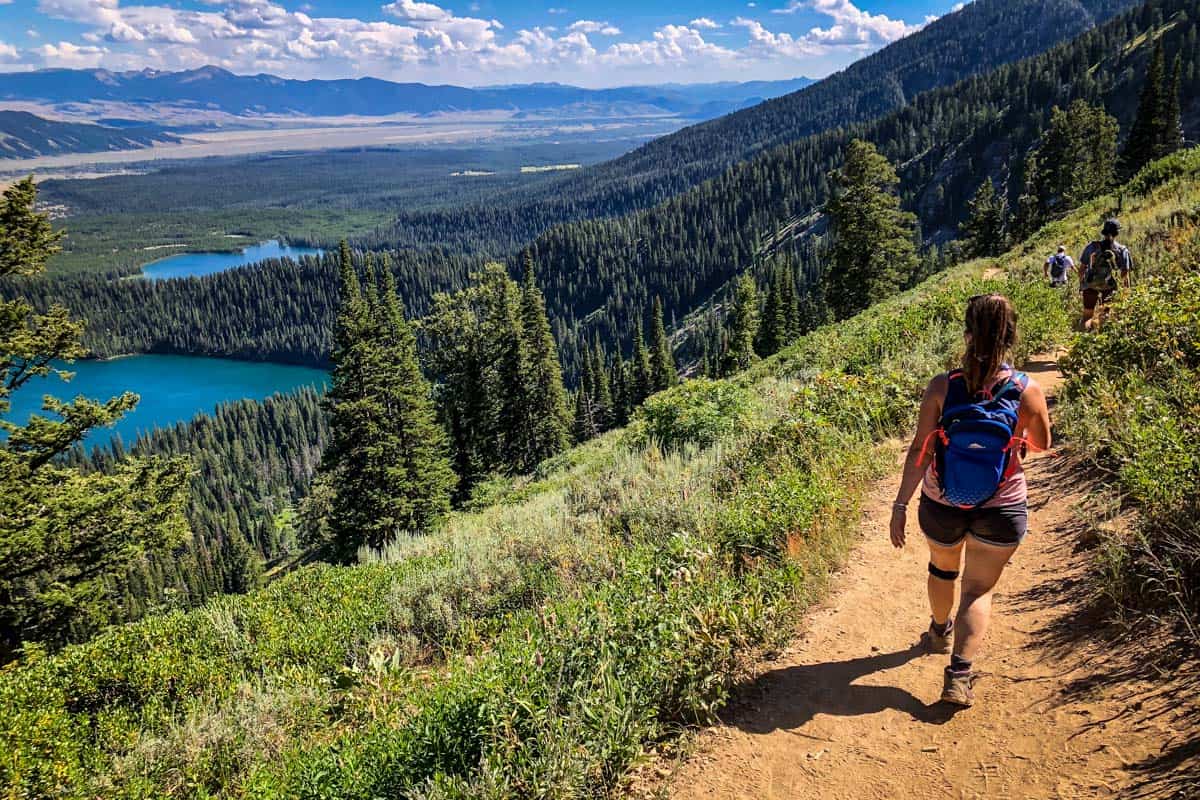
You’ll reach the first marked trail junction 1.7 miles in. Go straight, taking Garnet Canyon Trail toward Surprise and Amphitheater lakes. A left, staying on the Valley Trail, takes you down to Bradley and Taggart lakes.
Part II
At this point, you’ll get a small taste of why the Delta Lake hike is rated as strenuous. The next leg of the trail is an absolute slog that climbs 1,100 feet over six switchbacks. Thankfully, the unobstructed views provide a welcome distraction.
It’s a good idea to count the switchbacks, because the unmarked turnoff for the Delta Lake hike is immediately after the sixth switchback.
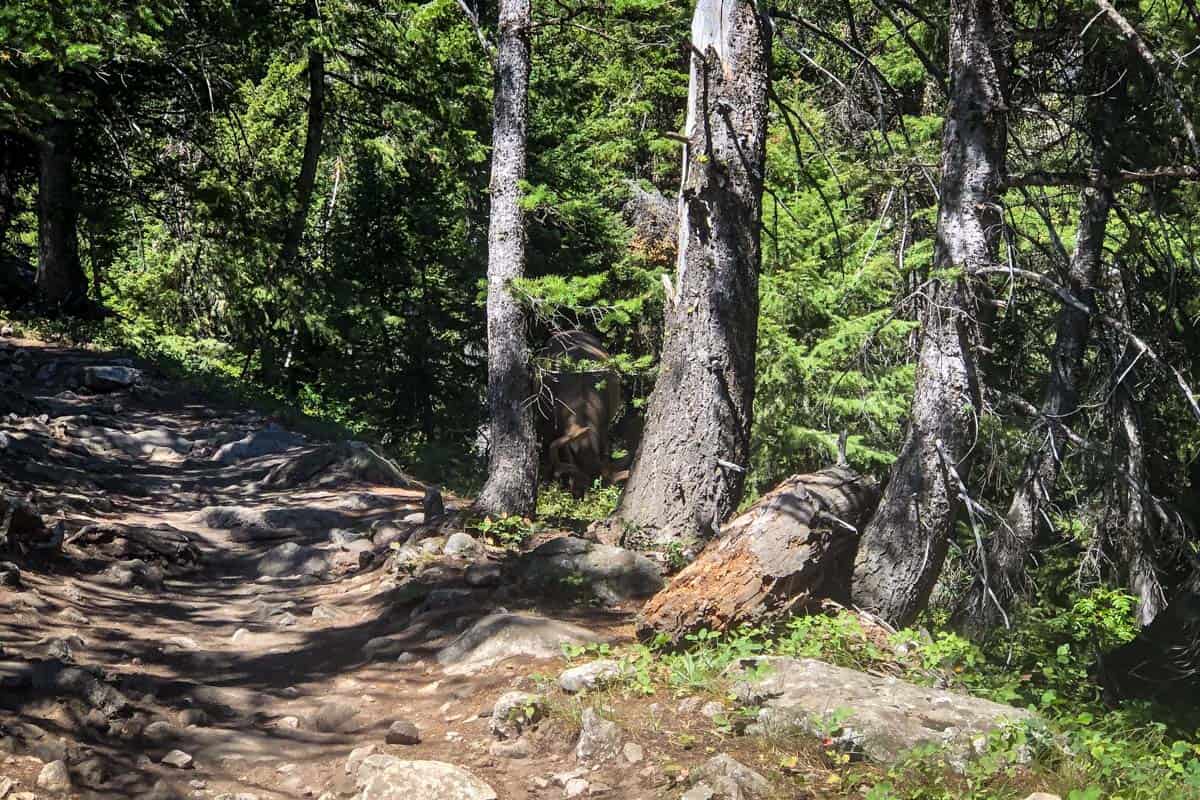
Just before the split, though (in the middle of the sixth switchback and right around the 3-mile mark), there’s another trail junction, this one into Garnet Canyon. Don’t take this one. Instead, again continue straight ahead, finishing the switchback section.
You’re not going far though–look for the steep dirt trail heading down to Delta Lake at the end of this final switchback. It’s obvious once you find it, but you can walk right by it if you’re not specifically looking for the trail.
Decision time
If you’re planning to hike to Surprise and Amphitheater lakes, now is the time to decide when you’ll do that. You can head there before or after visiting Delta Lake and, while it’s a personal decision, we recommend continuing to the other two and hitting Delta on the way back.
This gets the biggest climb out of the way earlier rather than later (from this point, there’s still one mile and 1,000 feet of elevation gain to Surprise Lake). Plus, Delta Lake is the highlight, so we like the idea of saving the best for last.
The unmaintained trail to Delta Lake
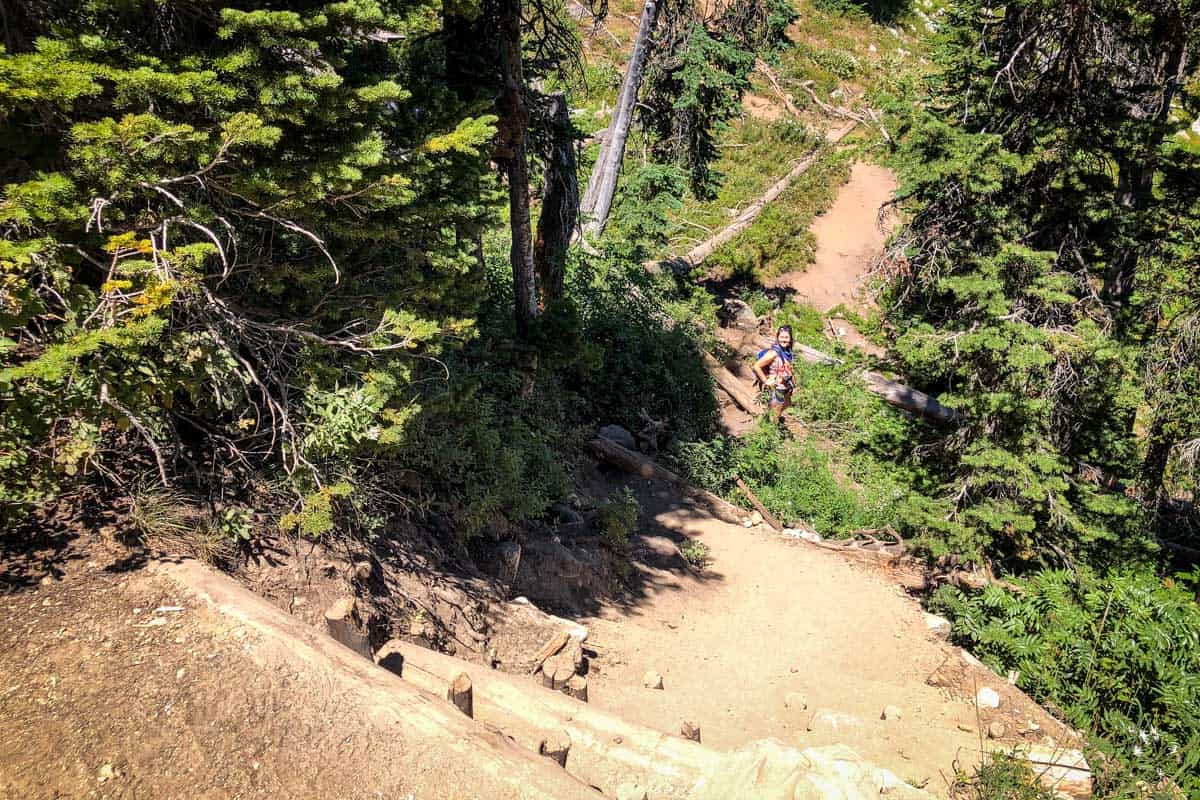
The dirt trail starts out narrow, with an initial descent down some roughly-hewn ‘stairs.’ Depending on what the winter was like, you may have to cross downed trees and other debris just a few minutes in (remember, the NPS doesn’t do trail maintenance here).
Soon, you’ll lose the trail in a large boulder field. Walking clear across—or rather, over—it is the only way to continue on. On the far end, you’ll see a steep dirt trail going uphill, leading to a second boulder field.
Here, DO NOT head straight up the super-steep hill on the left (trust us!)! There is a fairly obvious-looking false trail, and you may very well see other hikers on it, but taking it will lead you to the wrong place, high above Delta Lake.
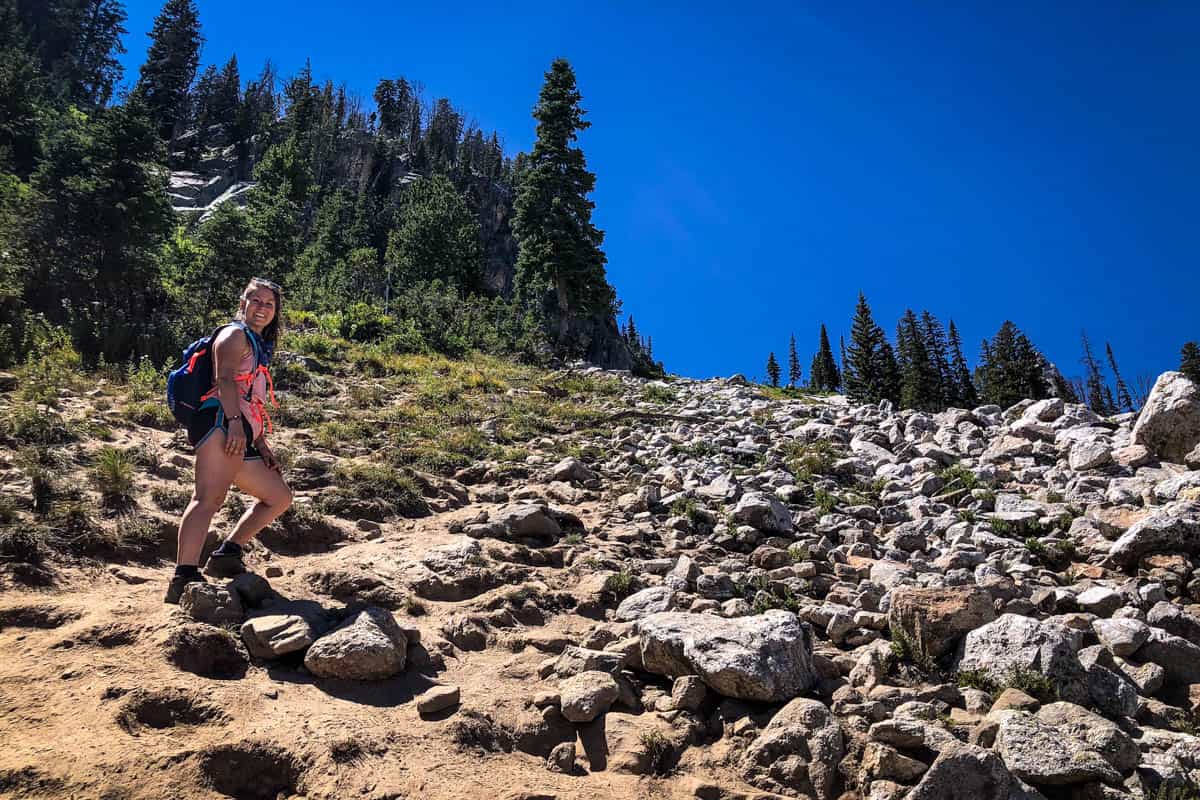
Instead, stick to the far right of the boulder field and go directly across it, toward the trees. It should look like you’re walking directly into the treeline.
This treed section, known as Glacier Gulch, is the last stretch of the Delta Lake hike. That’s the good news. The bad news is that it’s incredibly steep. It climbs straight up, gaining 600 feet in a short distance. Don’t be surprised to see hikers literally crawling on all fours!
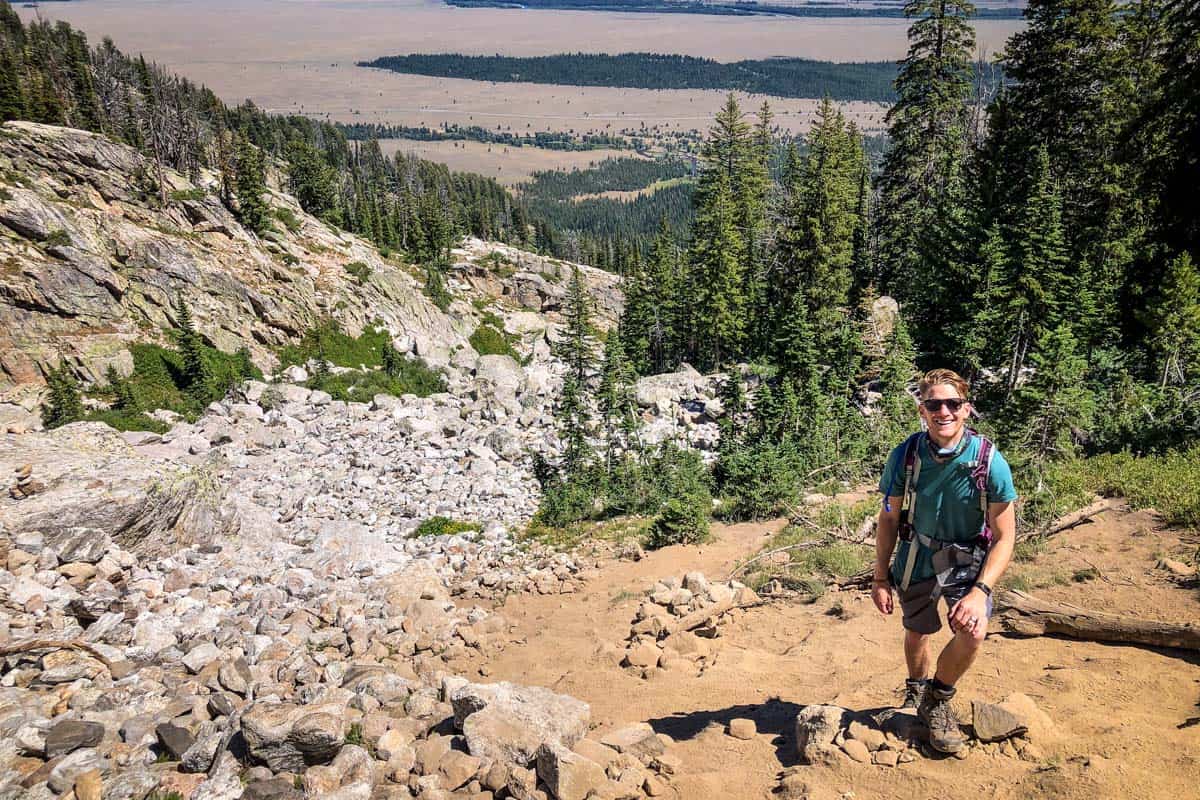
Finally, mercifully, Delta Lake appears. Enjoy some hard-earned snacks and walk around to take in all the different angles.
While there’s nothing stopping you from jumping in, be aware that the lake is entirely glacier-fed, so it’s colder than you can imagine.
To get back to the main trail, either to your vehicle or to Surprise and Amphitheater lakes, retrace your steps. Be extremely careful especially in Glacier Gulch, as the descent can be even more treacherous than the climb up.
Tips for hiking to Delta Lake
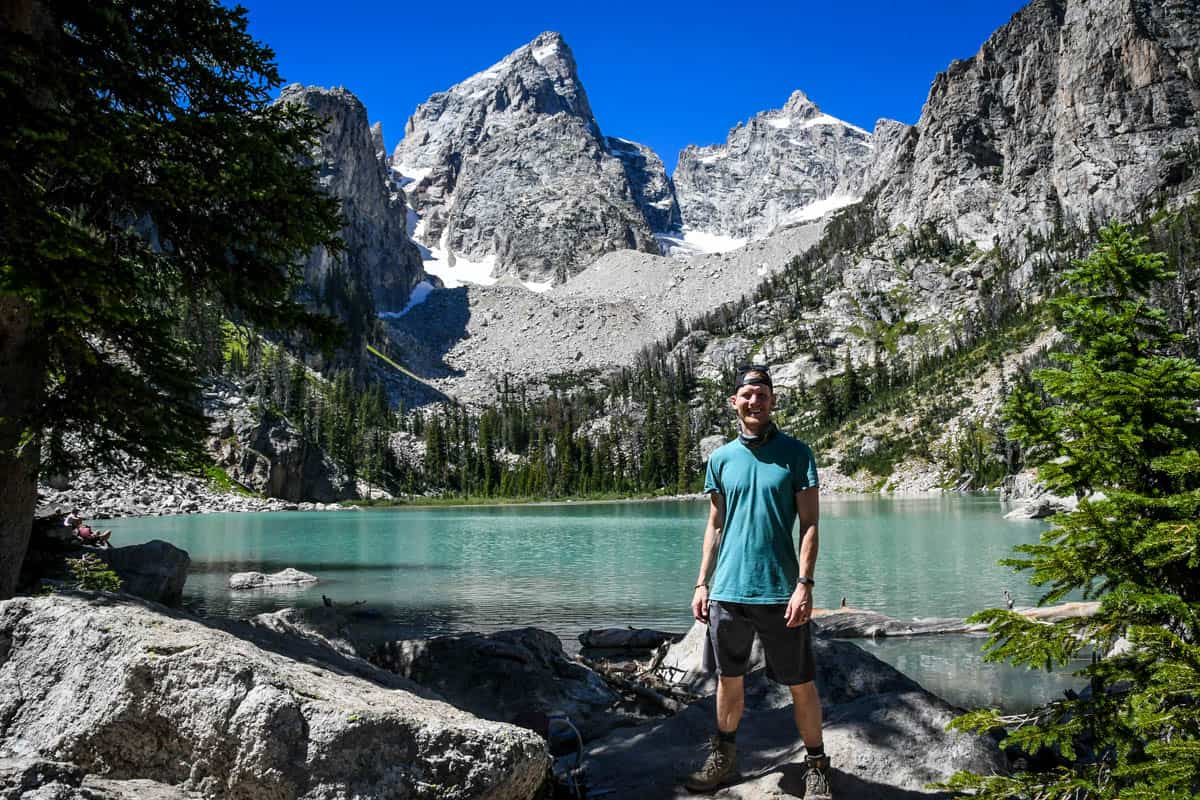
- Bring trekking poles. Even if you don’t typically hike with poles, they’re a life-saver (a knee-saver!) on the Delta Lake hike.
- Pack layers. Parts of the trail are hot and exposed, while it can be windy and chilly at the lakes, even in the peak of summer.
- Keep your food stashed away. Aside from bear concerns, critters like marmots and squirrels can be extremely food aggressive and are known to rip into packs, especially at lakes.
- Allow more time than you think you need. The Delta Lake hike is slow-going, even for people who typically hike fast. Just the half-mile from the main trail to Delta Lake itself will take about one hour each direction.
- Arrive EARLY. Several ultra-popular hikes start from Lupine Meadows, so the parking lot fills up starting at sunrise. Yes, you can park in overflow lots nearby, but you won’t want to hike ANY unnecessary distance after this beast of a hike.
Where to camp nearby
If you want to turn the Delta Lake hike into an overnight backpacking trip, the only place to camp is at Surprise Lake.
You’ll need a backcountry permit, which you can reserve online as far in advance as January. Alternatively, you can try your luck with getting a walk-up permit the day before or of your hike.
There are only three sites here, but this is not a particularly popular backpacking destination, so you actually have pretty good odds of getting a permit.
As far as other camping in or near Grand Teton National Park, you have a TON of options. In addition to five official, reservation-only NPS campsites and dozens of private ones, you can also look for FREE dispersed camping in the surrounding Bridger-Teton National Forest.
What to pack for hiking to Delta Lake

- Navigation: we recommend using Alltrails+ to download the offline trail map
- Get your first week of using Alltrails+ for FREE when you sign up using our link!
- Hiking daypack
- Water bottles and/or bladder for your Camelbak
- Bug repellant
- Sun protection: sunscreen, hat, sun glasses
- Headlamp
- Camera/tripod (this one’s our favorite for hiking)
- Lots of layers (here is a great resource if you’re wondering what to wear hiking)
- Comfortable hiking boots or shoes
- Hiking poles (optional)
- Plenty of snacks: check out our favorite hiking snacks here!
Be sure to download our FREE hiking packing list before your next trip and never leave another essential behind again!
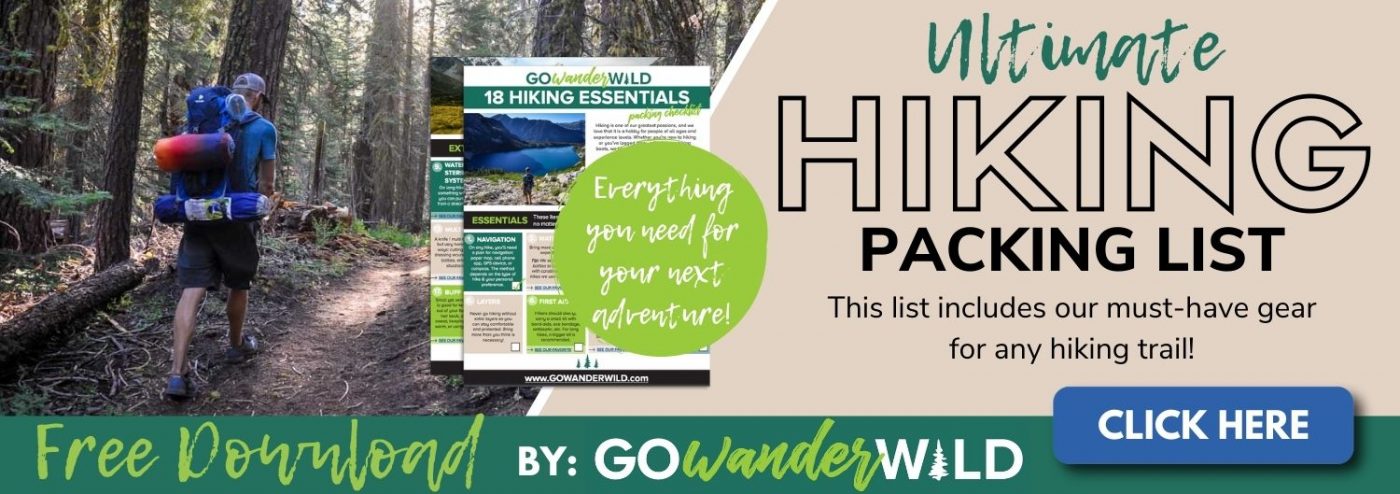

You may also like…
- Grand Teton Hikes You Don’t Want to Miss!
- 4-Day Grand Teton to Yellowstone Itinerary
- A Beginner’s Guide to Backpacking
- Backpacking Meals: A Guide to Meal Planning on the Trail
Save this article on Pinterest for later!
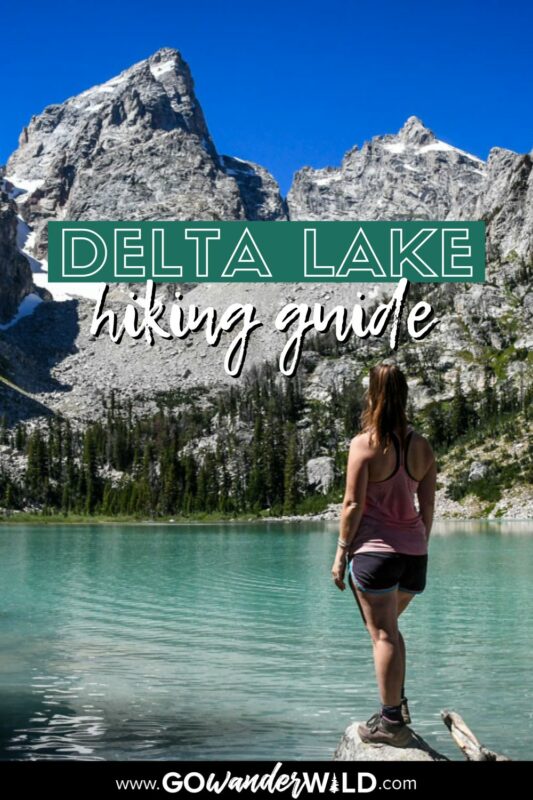
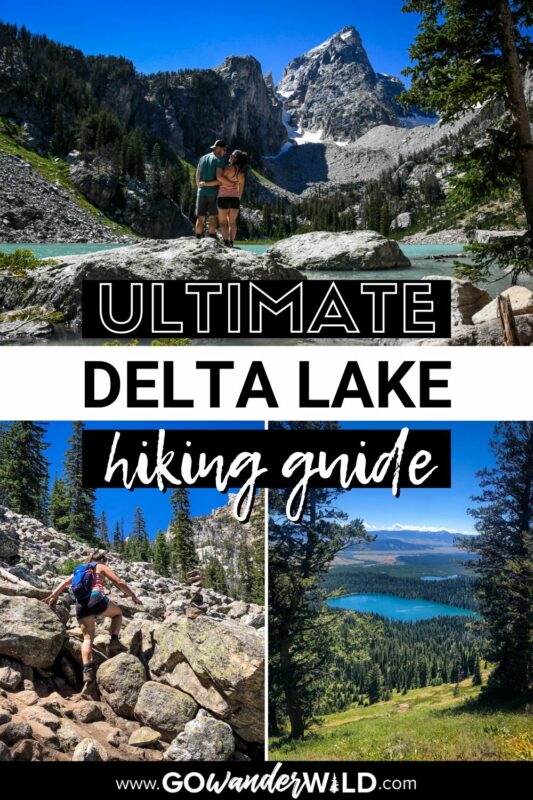
We want to hear from you!
Comment below if you have questions about the Delta Lake hike in Grant Teton National Park and we’ll do our best to get back to you!

